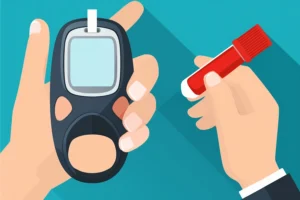Systemic Lupus Erythematosus (SLE) is a chronic autoimmune disease characterized by alternating periods of flare-ups and remission. Each flare-up leads to cumulative organ damage, negatively impacting overall health, increasing morbidity, and potentially reducing lifespan. Without proper management, this progression significantly impairs health-related quality of life (HRQoL), affecting physical, mental and psychosocial well-being.1 Although significant advancements have been made in the therapeutic management of SLE in recent years, individuals with the condition continue to experience a lower HRQoL compared to those with other common chronic diseases.(2,3,4) The primary goal of SLE management is to achieve complete remission or maintain low disease activity, thereby preventing flare-ups and improving overall well-being.5 This can be accomplished by integrating non-pharmacological therapies alongside conventional pharmacological treatments, offering a more comprehensive approach to patient care.
This article discusses evidence-based non-drug therapies for SLE.
Recommendations for non-pharmacological management
Non-pharmacological therapy for Systemic Lupus Erythematosus (SLE) is a patient-centered approach that emphasizes the individual’s active participation in managing their condition. Unlike pharmacological treatments that rely on medications to control symptoms and disease progression, non-pharmacological strategies focus on lifestyle modifications, self-care and holistic interventions to improve overall well-being. Patients play a crucial role in implementing these therapies, as they involve daily habits and long-term commitment.
- Patient Education:
Patient education and self-management support are essential strategies that have been proven to improve the health-related quality of life for individuals with SLE. It is beneficial to educate patients about:
- Early signs and symptoms of organ involvement: Recognizing these signs early is critical for prompt identification and treatment, which can prevent long-term damage.
- Avoiding triggers that cause flare-ups: Educating patients on common triggers can help them manage flare-ups more effectively and reduce their frequency.
- Medication adherence: Emphasizing the importance of consistently following prescribed treatments to manage the disease effectively.
- Lifestyle changes: Encouraging exercises, dietary modifications, photoprotection and smoking cessation to promote overall health and well-being.
- Managing stress, anxiety and depression: Given the emotional impact of SLE, providing access to support groups, counseling and if necessary, psychiatric care can help patients to better cope with the challenges of the disease and its complications.(3,6)
- Counseling on family planning and contraception: It is essential to educate patients that many medications used in the treatment of SLE can cause birth defects or developmental abnormalities. Patients must be informed about safe contraceptive options, considering their disease status, medication regimen, and potential complications. Those planning pregnancy should receive preconception counseling to ensure proper disease management and minimize risks to both the mother and fetus.6
- Physical Exercise:
Fatigue is a common and debilitating symptom in patients with systemic lupus erythematosus (SLE), significantly impacting their quality of life. Cardiorespiratory dysfunction has been suggested as a potential contributor to this fatigue. Research indicates that engaging in a daily aerobic exercise regimen can enhance cardiorespiratory function, which in turn helps to reduce fatigue. Furthermore, improvements in fatigue levels have been linked to better mitochondrial function.7 As a result, physical exercise, as a form of non-pharmacological treatment, has proven effective in alleviating fatigue in individuals with SLE.3
- Stop Smoking:
Smoking cessation should be strongly encouraged and supported for individuals with SLE due to its multiple negative impacts, including:
- Cigarette smoke contains various toxic substances that can trigger proinflammatory responses, which may contribute to the development of SLE in genetically predisposed individuals and provoke disease flares in those already diagnosed with SLE.8
- Smoking has been linked to reduced effectiveness of treatments for SLE.
- It has detrimental effects on vascular, gastrointestinal and respiratory health outcomes.
- Tobacco use is a well-established risk factor for several serious conditions including cardiovascular disease, cancer, osteoporosis and chronic obstructive pulmonary disease which are common comorbidities for patients with SLE.
- There is an increased risk for digital ulcers in smokers.3
It has also been observed that smoking cessation can reduce the severity of the disease. For instance, quitting smoking has been shown to lessen the severity of Raynaud’s phenomenon, a condition commonly seen in SLE patients.3 Therefore, promoting smoking cessation is vital for improving overall health and managing the disease more effectively.
- Avoid UV light:
Ultraviolet radiation is a well-known triggering factor of Systemic Lupus Erythematosus which causes photosensitivity, rashes and flares.9 It stimulates keratinocytes, leading to B cell activation and autoantibody production. So, it is advised to avoid direct sun exposure:
- Use Physical barriers: Appropriate garments like long sleeved dresses and pants, wide brim hats, sunglasses.
- You can also stay indoors during midday when the sun is strongest or when the UV index is high.
- Use broad spectrum sunscreens: SPF 30 or higher. (3,6)
- Patients with SLE are at significant risk of developing Vitamin D deficiency due to photosensitivity and the frequent use of photoprotective measures to avoid the sun. Therefore, assessing vitamin D levels and providing appropriate supplementation is recommended for patients with SLE to prevent the deficiency and its associated complications.10 It can be challenging to meet the recommended daily intake of vitamin D solely through diet, which is why supplementation may be necessary.
- Avoid cold exposure:
Cold exposure is the primary exacerbating factor for Raynaud’s phenomenon, leading to vasospasms that reduce blood flow to the fingers and toes. This results in symptoms such as color changes (pale, blue, then red), numbness, tingling and pain. Management strategies for Raynaud’s phenomenon should focus on minimizing exposure to cold, the primary trigger. This may include
- wear gloves and use heating devices to keep the hands warm (silver fiber gloves do not offer any significant advantage over conventional gloves)
- avoiding direct contact with cold surfaces
- ensure the skin is thoroughly dried after washing3
Implementing these precautions can help reduce the frequency and severity of Raynaud’s episodes in individuals with SLE.
- Diet and Nutrition:
It is recommended that SLE patients should consume a balanced diet that is-
- low in calories and protein
- rich in fiber, polyunsaturated fatty acids (PUFAs) (omega-3 and omega-6), essential vitamins (A, B, C, D, and E), and key minerals (calcium, zinc, selenium, iron, and copper).
- polyphenol-rich foods can provide antioxidant and anti-inflammatory benefits to support overall health.11
- Psychosocial interventions:
Psychosocial interventions help SLE patients cope with the disease and reduce stress, anxiety and depression and ultimately improve quality of life. Some of the interventions recommended are:
- Cognitive Behavioral Therapy (CBT): Helps patients manage negative thoughts and develop coping strategies.
- Group Therapy: Provides emotional support and shared experiences among patients.
- Psychoeducational Programs: Educate patients about SLE, self-care, and mental well-being.
- Patient-centered counseling: Offers personalized guidance to address emotional and psychological challenges.
- Psychotherapy (if required): For patients experiencing severe emotional distress or mental health issues
Conclusion
References
- Gomez A, Enman Y, Parodis I. Impact of Belimumab on Patient-Reported Outcomes in Systemic Lupus Erythematosus: Insights from Clinical Trials and Real-World Evidence. Patient Relat Outcome Meas. 2023 Jan 19;14:1-13.
- Gomez A, Qiu V, Cederlund A, Borg A, Lindblom J, Emamikia S, Enman Y, Lampa J, Parodis I. Adverse Health-Related Quality of Life Outcome Despite Adequate Clinical Response to Treatment in Systemic Lupus Erythematosus. Front Med (Lausanne). 2021;16;8:651249.
- Parodis I, Girard-Guyonvarc’h C, Arnaud L, et al. EULAR recommendations for the non-pharmacological management of systemic lupus erythematosus and systemic sclerosis. Annals of the Rheumatic Diseases 2024;83:720-729.
- Jolly M. How does quality of life of patients with systemic lupus erythematosus compare with that of other common chronic illnesses? J Rheumatol. 2005 Sep;32(9):1706-8.
- Lam, N. V. , Brown, J. A. & Sharma, R. American Family Physician. 2023;107 (4):383-395.
- Justiz Vaillant AA, Goyal A, Varacallo MA. Systemic Lupus Erythematosus. [Updated 2023 Aug 4]. In: StatPearls [Internet]. Treasure Island (FL): StatPearls Publishing; 2025 Jan-. Available from: https://www.ncbi.nlm.nih.gov/books/NBK535405/
- Hasni S, Feng LR, Chapman M, Gupta S, Ahmad A, Munday A, Mazhar MA, Li X, Lu S, Tsai WL, Gadina M, Davis M, Chu J, Manna Z, Nakabo S, Kaplan MJ, Saligan L, Keyser R, Chan L, Chin LMK. Changes in cardiorespiratory function and fatigue following 12 weeks of exercise training in women with systemic lupus erythematosus: a pilot study. Lupus Sci Med. 2022 Oct;9(1):e000778.
- Monica Hui Yan Chua, Irene Ai Ting Ng, Mike W.L.-Cheung and Anselm Mak. Association Between Cigarette Smoking and Systemic Lupus Erythematosus: An Updated Multivariate Bayesian Metaanalysis. The Journal of Rheumatology. 2020, 47(10):1514-1521; DOI: https://doi.org/10.3899/jrheum.190733
- Barbhaiya M, Hart JE, Malspeis S, Tedeschi SK, VoPham T, Sparks JA, Karlson EW, Laden F, Costenbader KH. Association of Ultraviolet B Radiation and Risk of Systemic Lupus Erythematosus Among Women in the Nurses’ Health Studies. Arthritis Care Res (Hoboken). 2023 Jul;75(7):1409-1415.
- Hassanalilou T, Khalili L, Ghavamzadeh S, Shokri A, Payahoo L, Bishak YK. Role of vitamin D deficiency in systemic lupus erythematosus incidence and aggravation. Auto Immun Highlights. 2017 Dec 26;9(1):1.
- Islam MA, Khandker SS, Kotyla PJ, Hassan R. Immunomodulatory Effects of Diet and Nutrients in Systemic Lupus Erythematosus (SLE): A Systematic Review. Front Immunol. 2020 Jul 22;11:1477.




